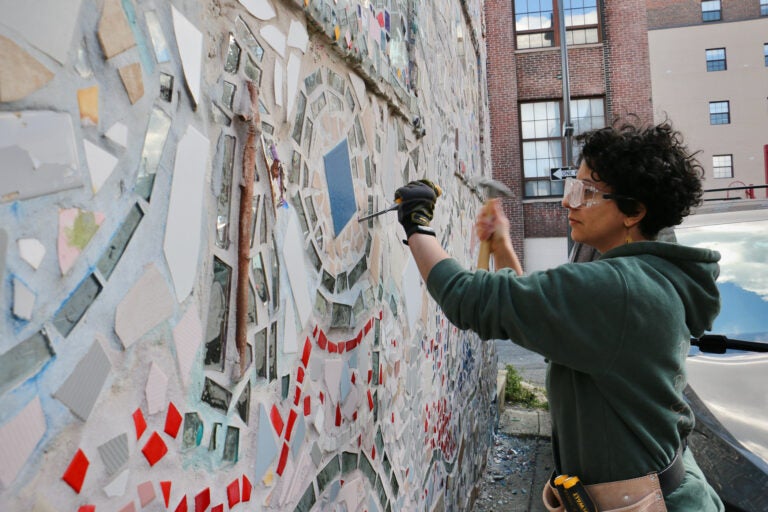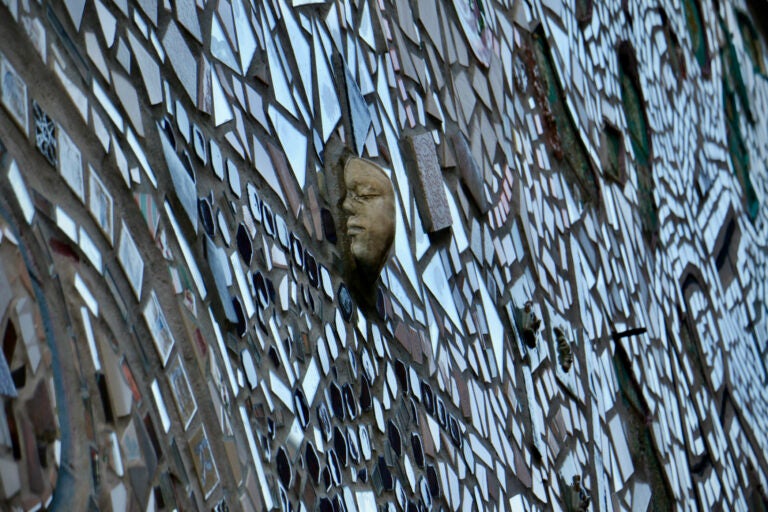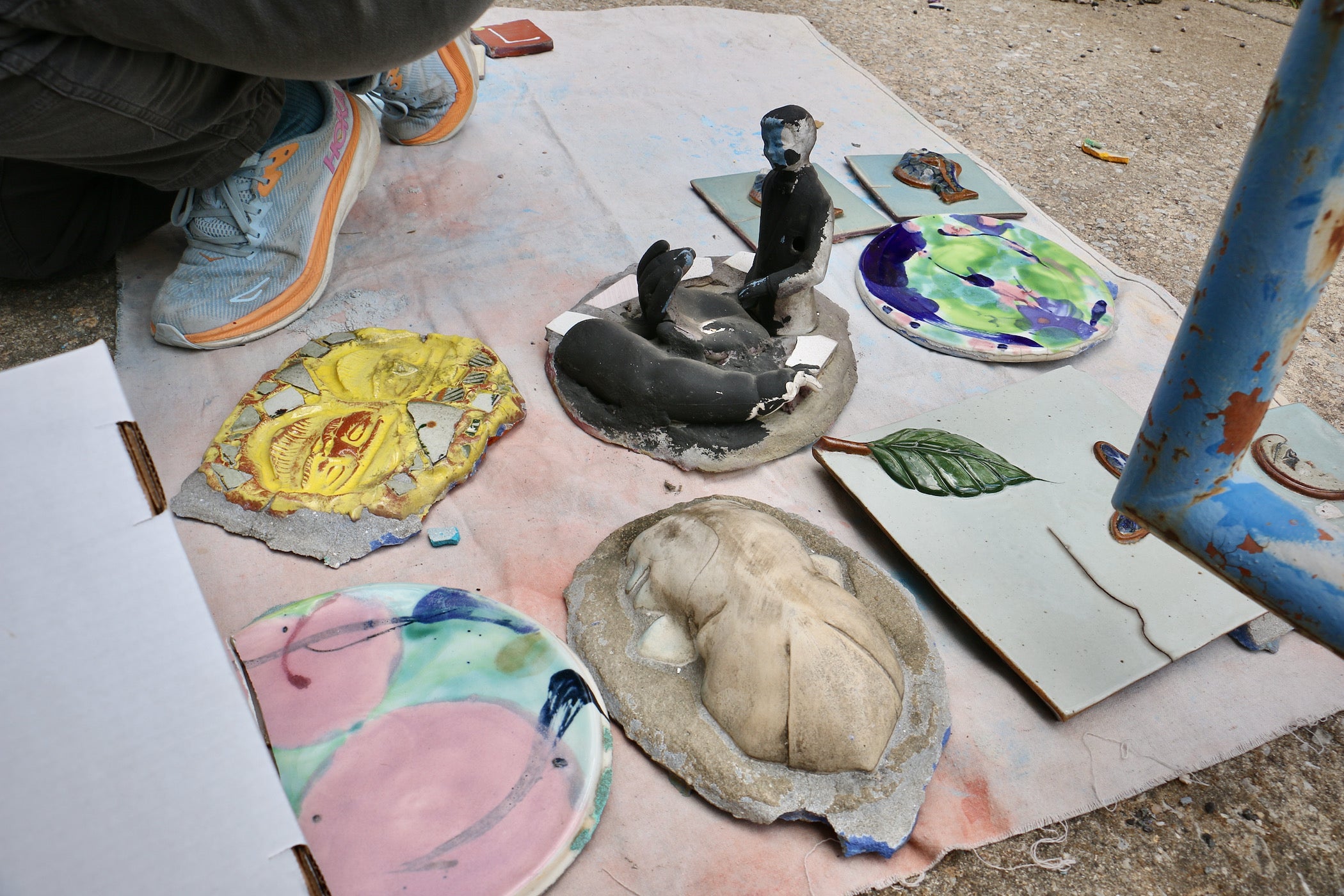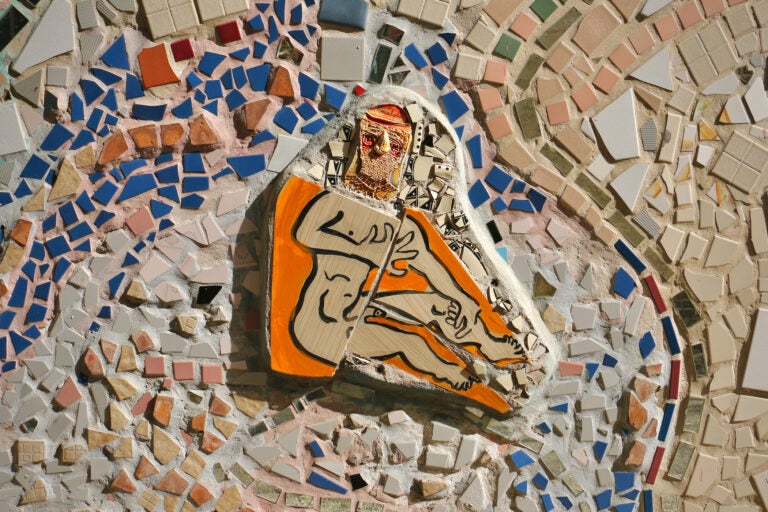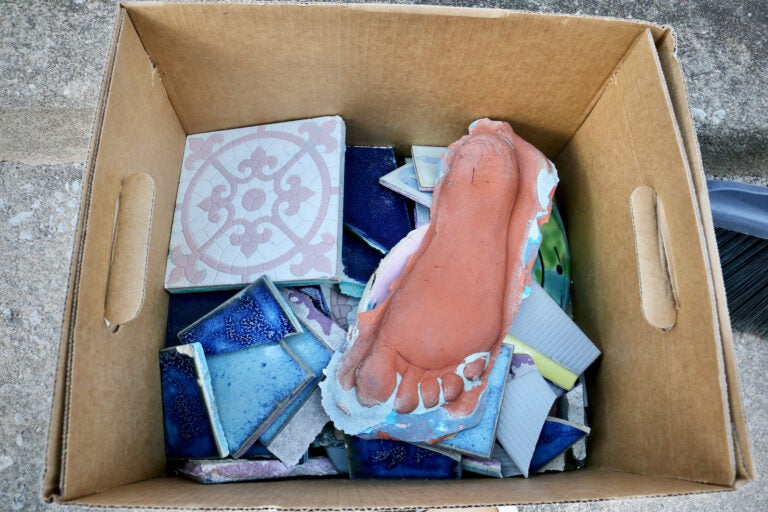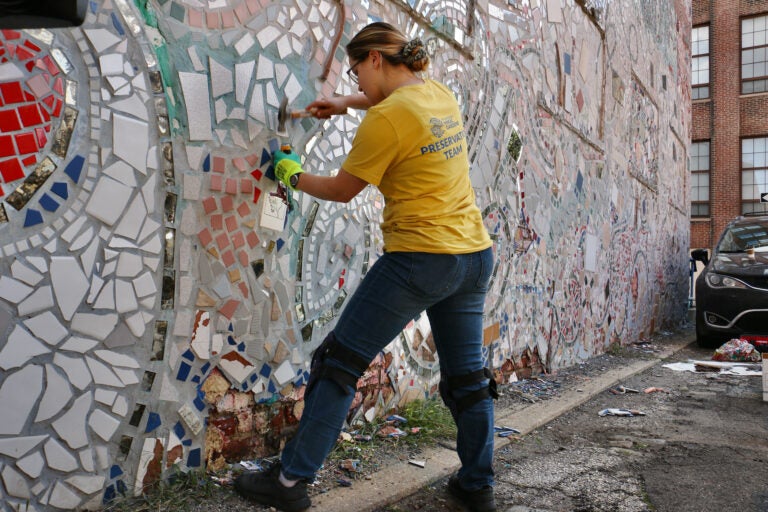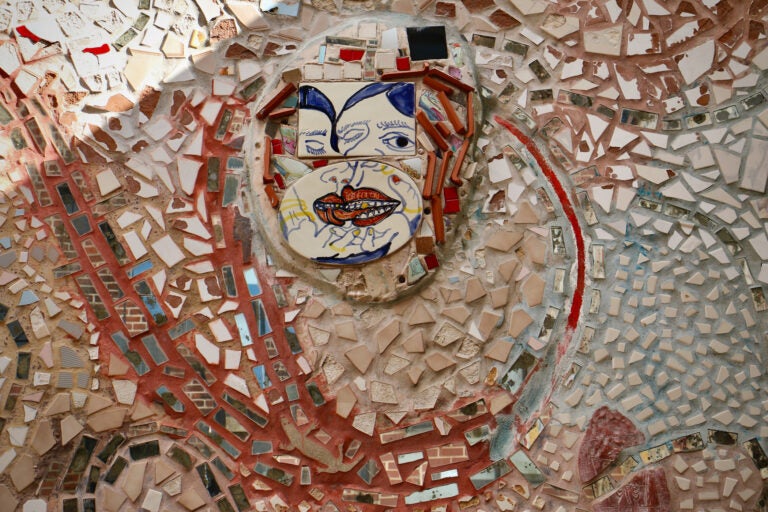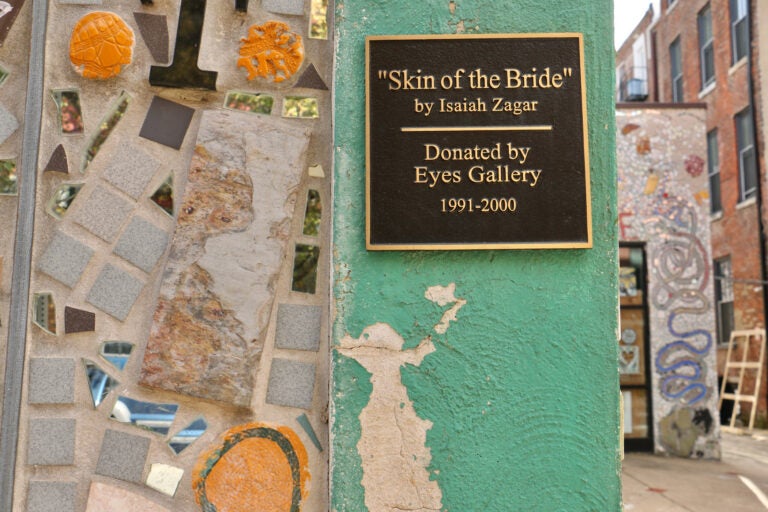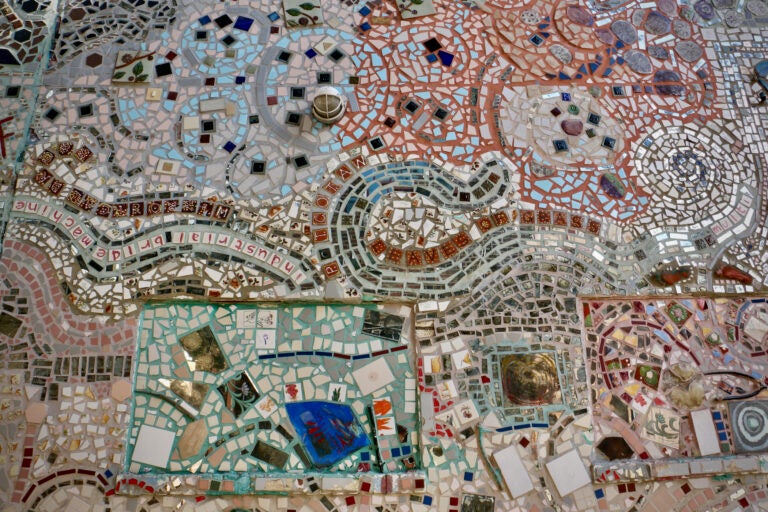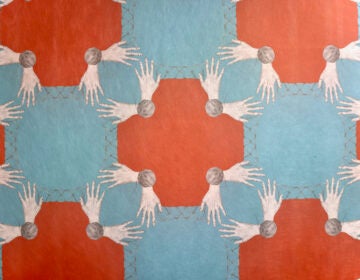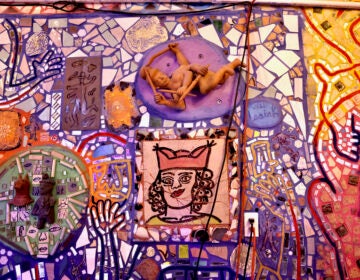Isaiah Zagar’s iconic Painted Bride mosaic in Philadelphia’s Old City neighborhood is coming down
The 7,000-square-foot tile mosaic wrapping the former performance venue had been in legal limbo for five years.
Listen 1:27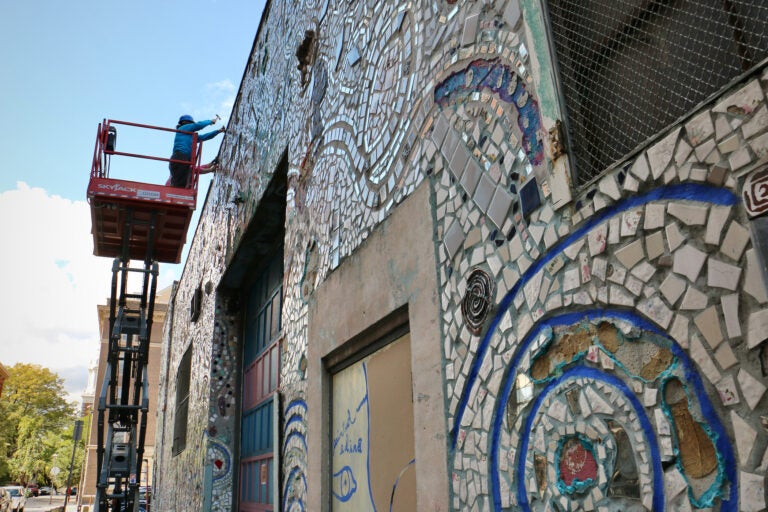
Using a scissor lift, Andrew Jeffries and Stacey Holder begin the work of chiseling tiles from the Painted Bride Art Center, saving as much as they can before the building is demolished in November. (Emma Lee/WHYY)
From Philly and the Pa. suburbs to South Jersey and Delaware, what would you like WHYY News to cover? Let us know!
It took Isaiah Zagar nine years to make the 7,000-square-foot tile mosaic wrapping around the Painted Bride building in Philadelphia’s Old City. The work stood for a quarter century, then endured a five-year court battle to determine its fate.
This week is the finale: “Skin of the Bride” is coming down.
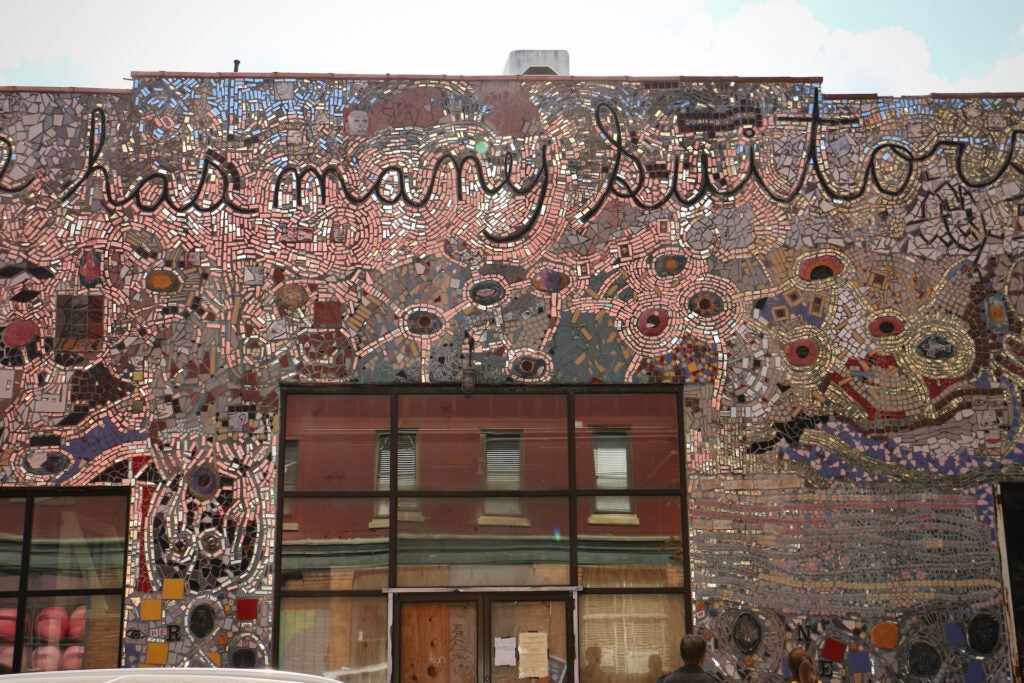
Members of the preservation team at Philadelphia’s Magic Gardens — the art environment Zagar built on South Street that is now a visitor attraction — are chipping out as many tiles as they can with hand chisels, pulling off those deemed significant.
The pieces will be saved, stored, and reused in other Zagar mosaics when they need repairs. The executive director of the Magic Gardens, Emily Smith, said it would be impossible to reassemble any facsimile of “Skin of the Bride.”
Smith was “heartbroken” that this day had come. She had been hoping against hope that a last-minute angel or legal turnaround would allow the mosaic to remain.
“I really just didn’t think it was going to come down,” said Smith. “Some people were, like, ‘We could tie this up forever.’ But I was like, at some point it’s time.”
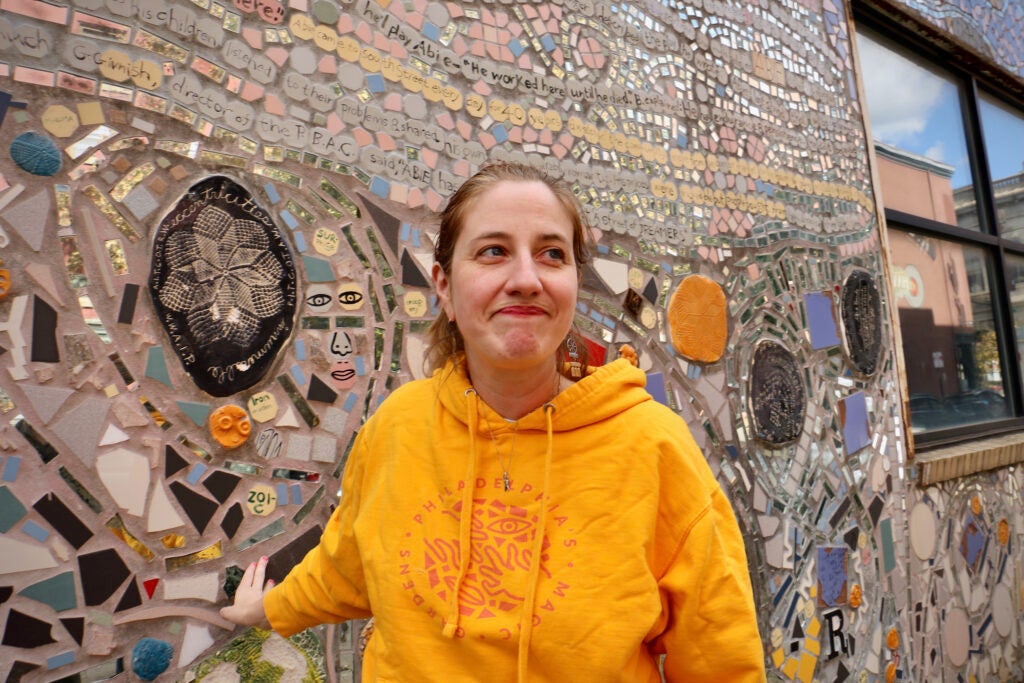
The fate of the Painted Bride has pitted arts organization against arts organization and neighbor against neighbor.
When the Painted Bride — the arts organization that owned the building — wanted to sell it, the Magic Gardens attempted, unsuccessfully, to have the mosaic declared historic. Thus began a protracted legal fight involving the historical commission, efforts to block the sale to a developer, a developer’s attempt at a redesign that would preserve the mosaic walls by suspending an apartment building above it, and a neighborhood group opposing that redesign for its height.
In the end, the mosaic lost. Stacey Holder, the Magic Gardens preservation and facilities manager, said it is not giving itself up easily.
“We’re finding that most of the tiles are really well adhered. Things are breaking as we’re removing them because they’re so well adhered,” Holder said. “The wall is really intact, so we’re having a lot of problems. But we’re doing the best we can.”
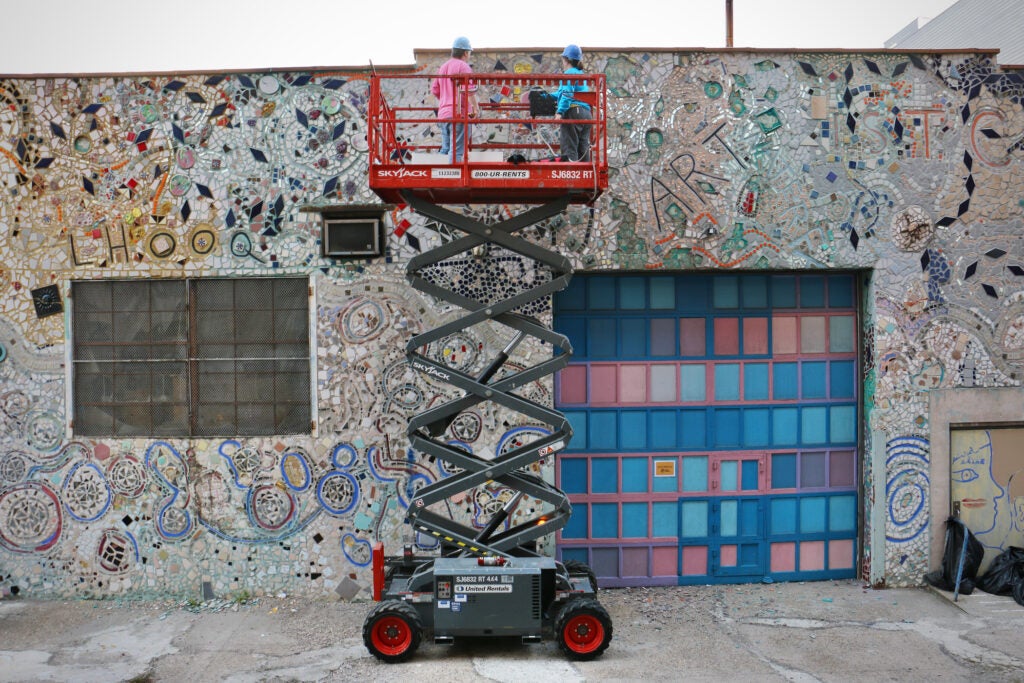
Perched on a scissor lift, armed with safety goggles, a hard hat, and a hammer and chisel, Holder set about destroying something she regards as beautiful.
“I’ve had to take a deep breath and set that aside just to get the job done,” she said. “It’s really upsetting to have to do this because this is such a unique, iconic building for Philadelphia to lose. There’s nothing like this anywhere else in the world. I’m an artist, so it hurts to feel like nobody’s cherishing these unique things that we make in our community.”
The process of removing tiles is expected to take two weeks. The new owner, Shimi Zakin, of the Atrium Design Group, will likely demolish the building shortly afterward.
“To Shimi’s credit, he’s really been supportive of working with us,” said Smith. “He is tearing the building down, but he’s communicated a lot with us and has very generously removed what we called the ‘Death Shroud,’ the black knitting which was on the building for five years, and has allowed us to document it really, really well.”
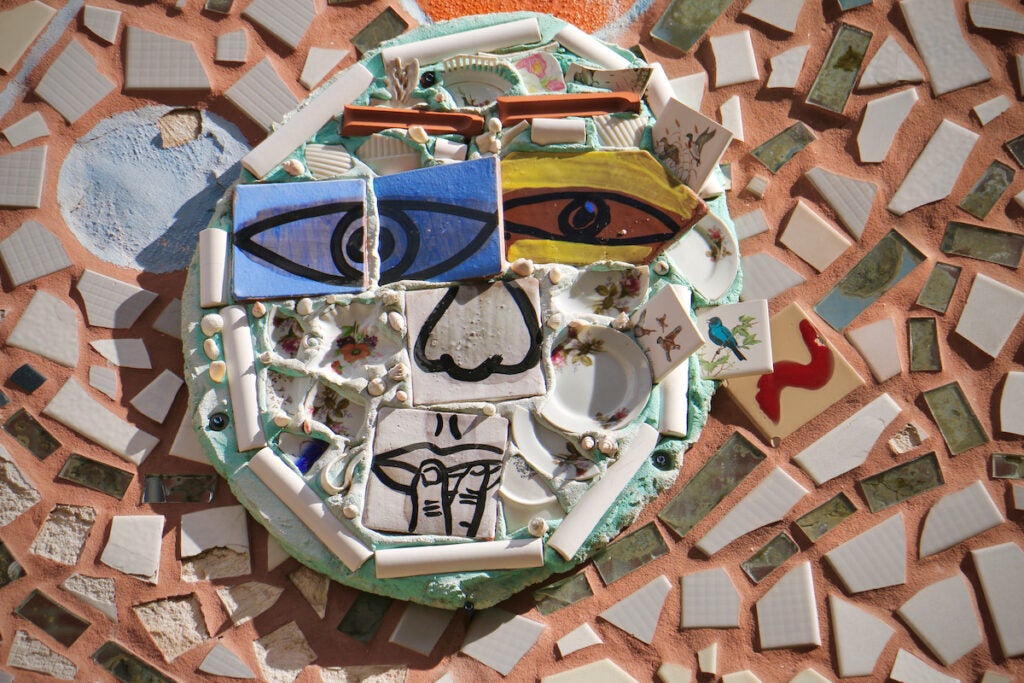
Zagar, an iconic Philadelphia figure, has made over 200 mosaic walls around the world, with a high concentration in the city. “Skin of the Bride” is by far the largest (the Magic Gardens is larger, but you need a ticket to get inside). Smith says Zagar honed his signature style on the Painted Bride: Starting from the back of the building, the mosaic wrapping to the front shows the evolution of his craft.
The mosaic is made up of broken tile, glass, and ceramic pieces handmade by Zagar and other artists, many of whom are based in Mexico and Central America. Some pieces are made by Zagar pressing lace doilies into wet clay. Other pieces are directly molded from Zagar’s hands and feet.
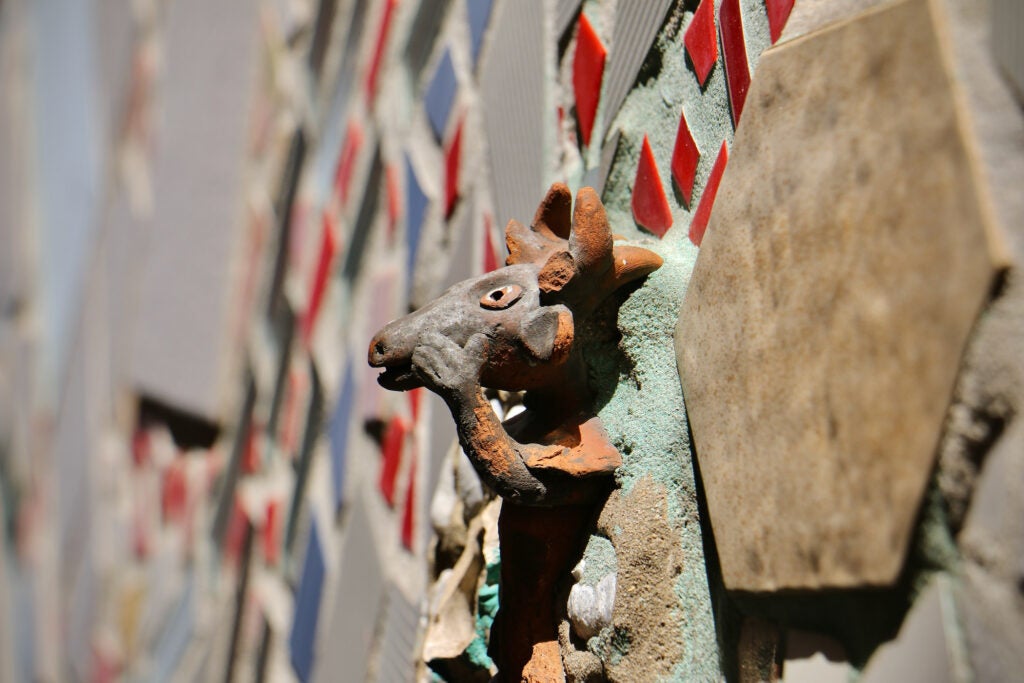
“There’s a lot of recycled kitchen tiles and bathroom tiles. They’re not a priority,” she said. “There’s a lot of folk art that comes from Mexico that you can’t find anywhere else anymore, that we’re prioritizing. There’s also a lot of artists from Philadelphia that are showcased on this wall. We’re trying to remove those tiles safely.”
For example, Holder was able to remove intact a stoneware duck by Jorge Wilmot, a highly regarded ceramicist from Mexico.
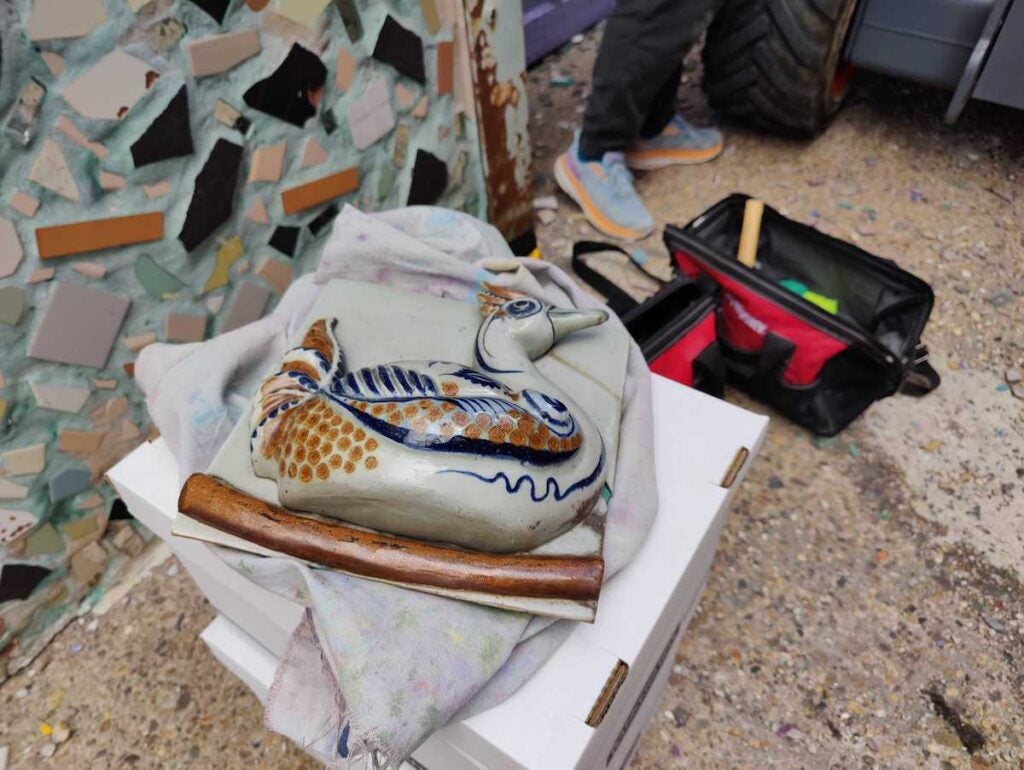
Zagar had used colored brick mortar to fix the pieces to the wall, which is brick on the front, stucco on the side, and cinder block on the rear. Smith said the idea of wholly removing the wall, or even sections of the wall, would be prohibitively expensive, and likely futile as cracks in the brittle surface would be inevitable.
She also said saving whole sections of the wall would disrespect the intention of the artist.
“You’re making a decision to save one section of its entirety,” she said. “Think about cutting up [Picasso’s] ‘Guernica.’ Is that really the artist’s intention?”
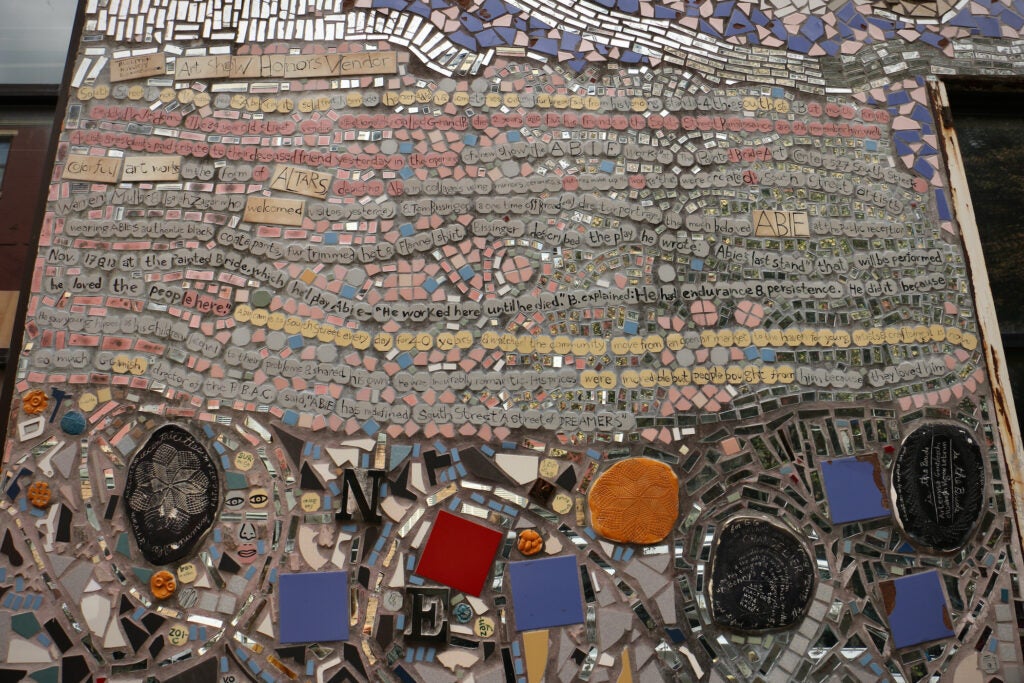
The entire piece, which fits together in an organic, stream-of-consciousness way, was designed for that specific building, for the specific purpose of being an art center. Once the courts decided the building could be demolished to make way for an apartment building, Zagar personally lost interest in saving the mosaic, said Smith.
“Isaiah shrugged and said, ‘Well we tried,’” she said. “’It was a good dream.’”
Smith said Zagar, who is 84 and facing undisclosed health ailments, is no longer making work of any kind. Assuming no new work by Zagar will ever come again, it has become a priority to preserve old work to replace broken or weathered tiles on other walls.
Susan Kettell, a resident of the Old City neighborhood for 48 years, stopped by the mosaic to take pictures before it would be removed, and to thank the workers for saving parts of it. She said for decades she came to the Painted Bride often to see performances.
“The arts tell the story,” she said. “The arts tell the story of neighborhoods and of life in the city.”

Get daily updates from WHYY News!
WHYY is your source for fact-based, in-depth journalism and information. As a nonprofit organization, we rely on financial support from readers like you. Please give today.



